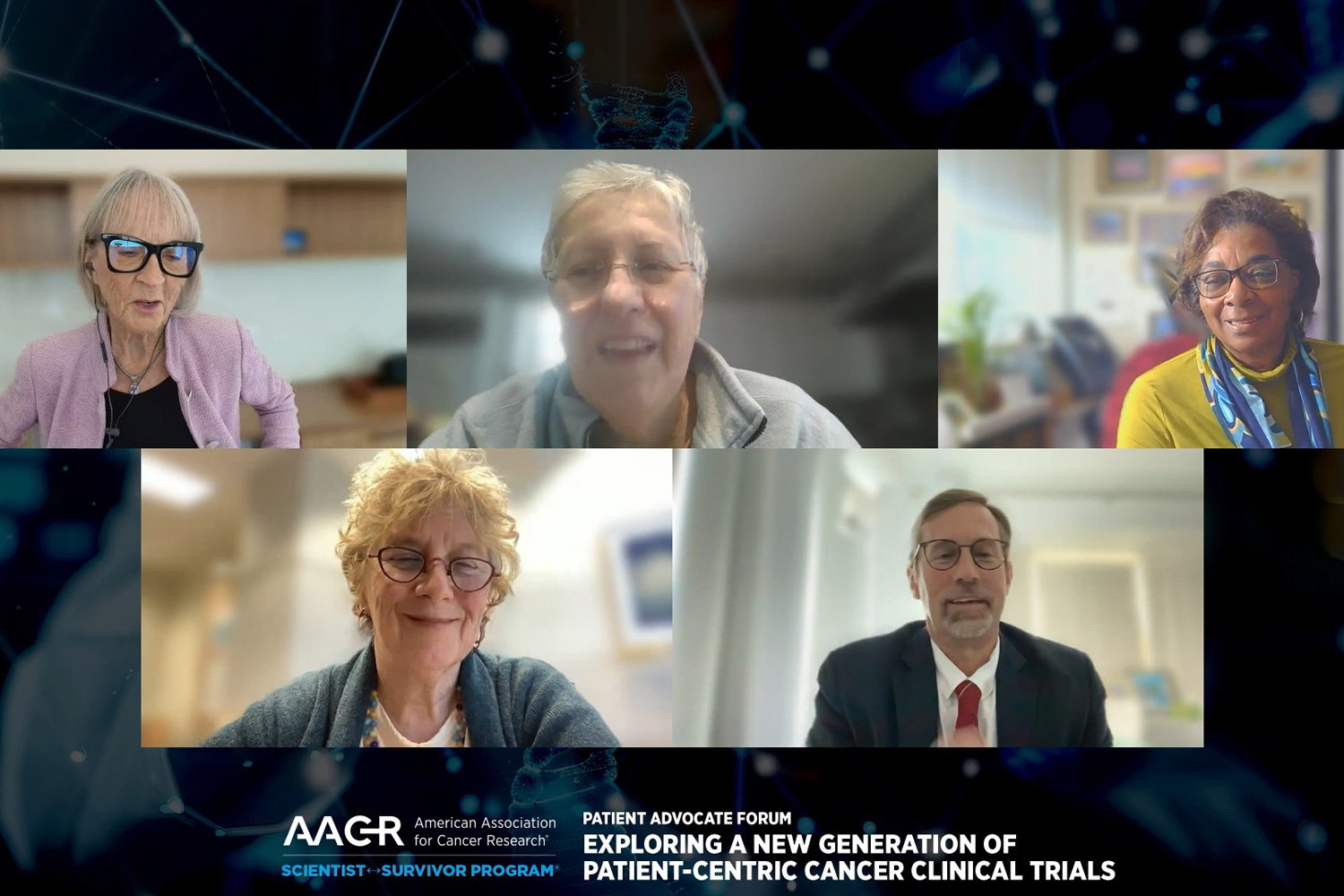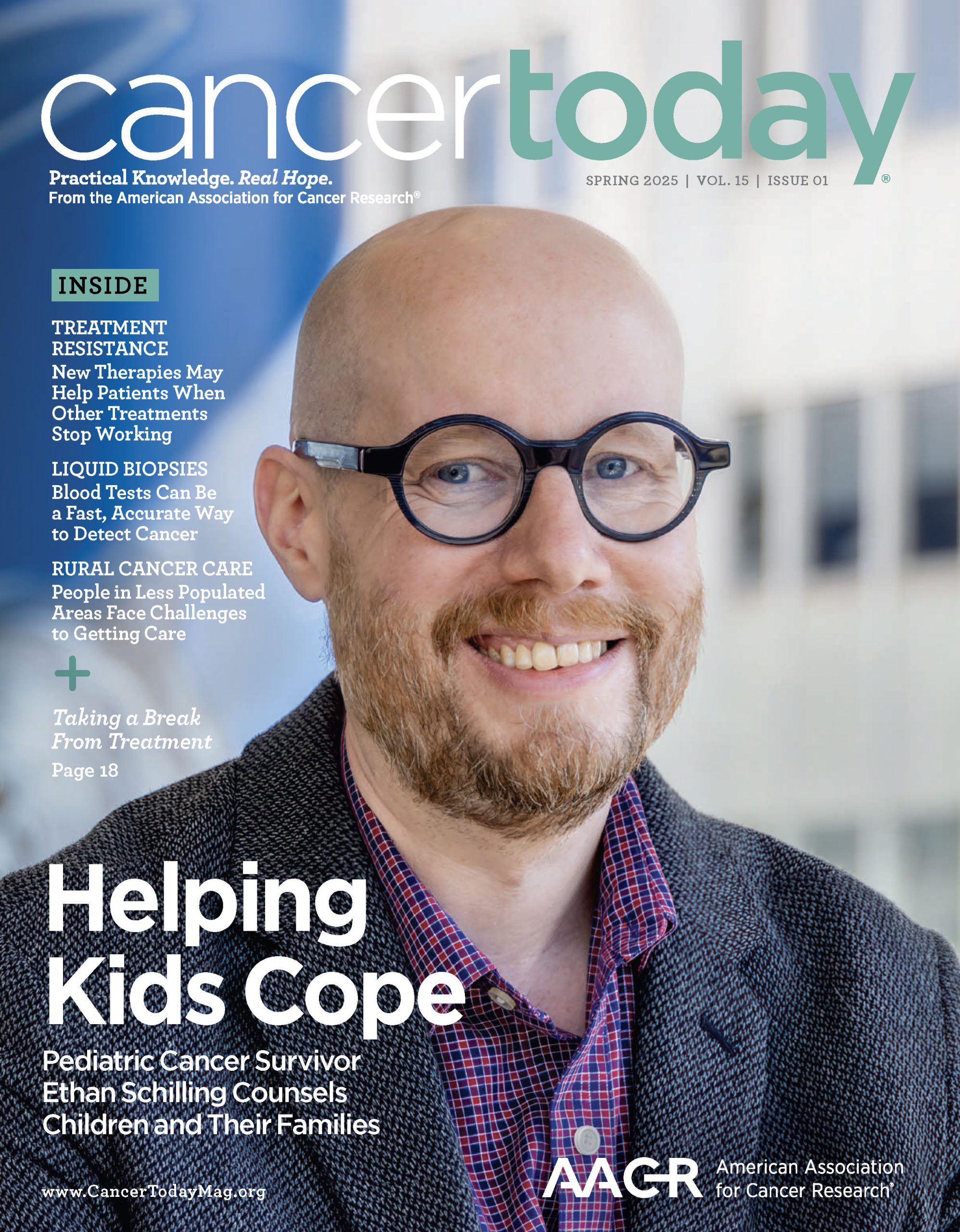BEFORE A NEW TREATMENT becomes available for cancer patients, it must be tested in clinical trials and shown to be both safe for use and effective at treating the disease. But an explosion of new approaches to care, the rise of precision oncology that targets certain tumor mutations rather than broad cancer types, and low rates of clinical trial participation leave researchers asking if there are enough clinical trial participants to keep cancer research moving forward.
A panel of experts attempted to answer the question during a January 21 virtual forum for patient advocates presented by the American Association for Cancer Research (AACR) titled “Exploring a New Generation of Patient-Centric Cancer Clinical Trials.” (The AACR also publishes Cancer Today.)
The panel, moderated by Anna Barker, chief strategy officer at the Ellison Institute of Technology in Los Angeles, included three researchers and a patient advocate, each of whom approached the topic from a different perspective. The first speaker, AACR President Patricia M. LoRusso, a medical oncologist at Yale Cancer Center in New Haven, Connecticut, emphasized the importance of innovations in clinical trial design have an important role in improving care for patients. “Just as we know that there is basic science, translational science,” LoRusso said, “I consider clinical research a science in and of itself.”
While new insights into the biology of cancer discovered in the past 25 years have increased the options for treatment in ways that have made care both more effective and less toxic to patients, LoRusso said these new treatments have required innovative approaches in designing clinical trials. For example, whereas earlier clinical trials simply looked for the maximum drug dose that patients could tolerate without toxic effects, newer trials attempt to optimize drug dosages so they are effective with a minimum of toxicity.
“One of the things we realized is we’re going to have to come up with more novel trial designs. Because if phase I is going to dictate what the dose is going to be in phase II and III, we want to make sure have a safe dose but an effective dose,” LoRusso said.
The Potential of New Trial Designs
An example of the new approach to clinical trials is I-SPY 2, a platform for studying new cancer treatments that has been active since 2010 and has been used to investigate 23 drugs, 10 of which have subsequently been studied in phase III trials. “What I-SPY is asking: What if you add targeted drugs to standard-of-care chemo and for whom? What subtype?” said Laura van ’t Veer, a researcher on I-SPY and the program leader of the UCSF Helen Diller Family Comprehensive Cancer Center Breast Oncology Program in San Francisco.
In the current version, I-SPY uses an adaptive design so that people who have a strong response to a drug get less treatment and people whose cancers do not have the same level of response are directed to additional treatment with other targeted drugs and chemotherapy.
Read our previous coverage of AACR Patient Advocate Forums.
This approach appealed to Jan Tomlinson, who was diagnosed with triple-negative breast cancer in 2023. She said she was initially given a treatment plan that would have included weekly chemotherapy followed by surgery and radiation. But at UCSF Health, where she went for a second opinion, the I-SPY 2 clinical trial was offered as one of her treatment options.
“The thing that caught my interest early on … is the way in which they presented the information for the clinical trial that was very easy to read and understand,” Tomlinson said. “And right out of the gate it had less toxicity.”
Being part of the trial meant Tomlinson had fewer chemotherapy infusions, and she felt reassured knowing that she would be regularly monitored. After the initial treatment was completed, there was no sign of cancer, and she was able to go directly to surgery knowing that the response of her cancer to the treatment supported that direction.
Her experience has led Tomlinson to advocate for educating patients about clinical trials. “I’m very passionate that at the onset of a care plan, that all things are on the table,” Tomlinson said. “The first place just gave me standard of care, which—it wasn’t like it’s a bad thing to do—it just wasn’t the full complement: standard of care and clinical trial options.”
Getting Clinical Trials to Patients
Not being told their options is not the only thing keeping patients from joining clinical research. As pointed out by AACR past-president David Tuveson, director of the Cold Spring Harbor Laboratory Cancer Center in New York, there are many practical barriers to clinical trial participation, including not being well enough to take part and the inability to travel to academic centers where clinical trials are typically held. As a result, only about 5% of cancer patients participate in clinical trials, Tuveson said.
There are signs of progress. Tuveson said he has been encouraged by new treatments for side effects like cachexia, a condition where a patient loses fat, muscle and bone. Reducing the impact of these side effects could improve patient health and allow them to be eligible for trials. He also noted the progress being made in bringing clinical trials closer to patients through community medical practices.
Tuveson said that improving the rate of patient participation by increasing access is going to take a concerted effort, from patients and other advocates, from industry partners who rely on trial participants in studying and getting their drugs approved, and from policymakers. Identifying the problem is part of that effort, but setting a vision for the future is also important. “I think we should have a goal,” Tuveson said. “We’re at 5%; it’s too low. We should shoot for something.”
Cancer Today magazine is free to cancer patients, survivors and caregivers who live in the U.S. Subscribe here to receive four issues per year.





